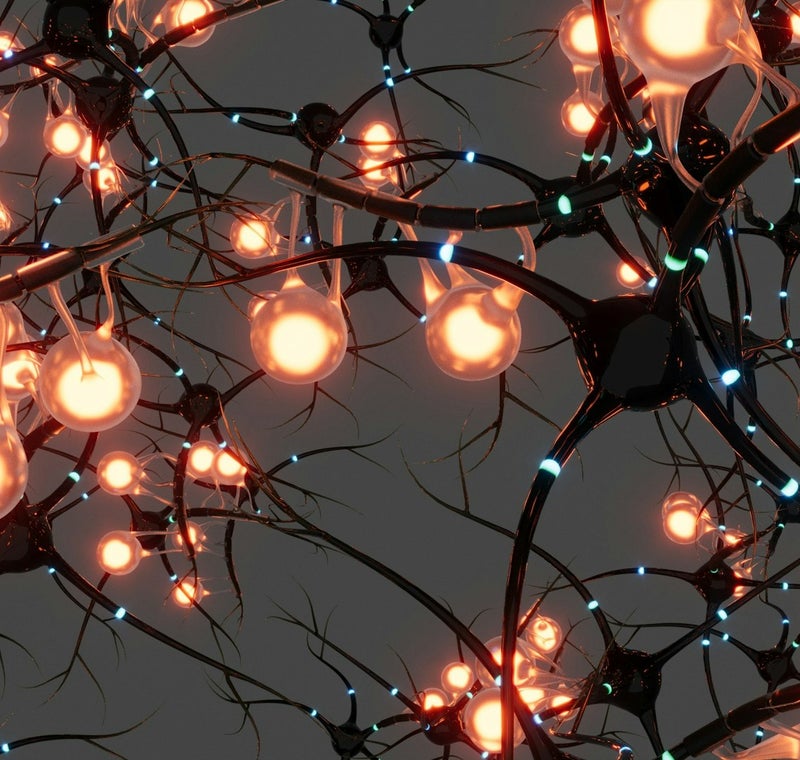
Dopamine, a neurotransmitter (chemicals that allow our neurons, or nerve cells, to talk to each other) often referred to as the "reward chemical," plays a key role in motivation, focus, and learning. ADHD, a neurodevelopmental disorder, is often linked to imbalances in the dopamine system. This can present as difficulties with focus, attention, and impulse control. For students, especially those with ADHD, understanding dopamine helps in creating an optimal learning environment.
In the following sections, we will explore the relationship between dopamine and ADHD in more detail and provide practical tips for creating a dopamine-friendly classroom.
Dopamine: The Reward Chemical
Dopamine as a chemical messenger helps our brains regulate various functions, including:
- Movement: Dopamine plays a crucial role in coordinating voluntary movement.
- Reward and Motivation: It is often associated with the "reward system" of the brain, releasing feelings of pleasure and motivation when we achieve goals or engage in enjoyable activities.
- Learning and Memory: Dopamine is involved in the reinforcement of learning, helping us remember information that is associated with positive experiences.
- Attention: Dopamine helps regulate attention and focus.


Imagine dopamine as a fuel for your car.
- Car: Your brain.
- Fuel: Dopamine.
Normal Car (Typical Brain):
- The car has enough fuel to start, run smoothly, and reach its destination.
- The brain has enough dopamine to focus, learn, and regulate behaviour.
Car with Low Fuel (ADHD Brain):
- The car struggles to start, runs erratically, and may stall.
- The brain has difficulty focusing, learning, and controlling impulses.
Refueiling the Car (Boosting Dopamine):
- Filling up the petrol tank (increasing dopamine levels) can help the car (brain) run better.
- Strategies like exercise, healthy eating, and medication can help boost dopamine levels.
The exact relationship between dopamine and ADHD is complex and still under investigation but research suggests a link.
Studies indicate that individuals with ADHD might experience lower levels of dopamine or have difficulty utilising dopamine effectively. This can manifest in symptoms such as:
- Difficulty focusing and sustaining attention
- Impulsivity and difficulty controlling behaviour
- Struggles with planning and organisation
Recognising Low Dopamine in Students with ADHD
Obviously a definitive diagnosis of low dopamine levels requires specialised medical testing but teachers can often observe certain behaviours and patterns in students with ADHD that may be indicative of low dopamine levels.
Here are some common signs:
- Decreased motivation: Students may seem uninterested or apathetic, struggling to initiate tasks or complete assignments.
- Difficulty focusing: They may have trouble concentrating, easily becoming distracted or zoning out.
- Mood swings: Students might experience frequent mood changes, including irritability, sadness, or impulsivity.
- Poor planning and organisation: They may have difficulty planning ahead or organising their belongings, leading to missed deadlines or disorganisation.
- Increased impulsivity: Students may act without thinking, often leading to negative consequences.
- Fatigue or low energy: They might feel tired or lethargic, even with adequate sleep.
It's important to note that these behaviours can be influenced by various factors, including environmental stressors, sleep quality, and other underlying conditions. However, if you observe a consistent pattern of these symptoms, it's worth discussing the possibility of low dopamine levels with your SENDCo.
What might help?
Understanding the potential role of dopamine in ADHD can inform classroom practices.
By creating a dopamine-friendly environment, we can enhance student engagement, motivation, and focus.
Here are some strategies:
- Structure and Predictability: A structured classroom routine provides a sense of security and reduces uncertainty, which can be overwhelming for students with ADHD.
- Clear Expectations and Goals: Defining clear expectations and setting achievable goals can help students feel a sense of accomplishment, triggering dopamine release.
- Reward Systems: Implementing a reward system based on specific behaviours or achievements can be motivating.
- Movement Breaks: Incorporating short bursts of physical activity can increase dopamine levels and improve focus. These can be part of normal classroom practice and certainly don't need to involve jumping up an down or whole class disruption.
- Sensory Input: Providing sensory-rich experiences, such as visual aids, tactile materials, or auditory stimulation, can help engage students and stimulate dopamine release.
Nutrition and Exercise for Dopamine Boost
Nutrition and exercise play significant roles in supporting dopamine production and overall brain health. Teachers obviously can't control many of these, but understanding their role can help.
Incorporating these elements into daily life can help students enhance their focus, motivation, and overall well-being.
The Role of Nutrition
- Dopamine Precursors: Certain amino acids, such as tyrosine and phenylalanine, can support dopamine production. Examples include lean proteins, nuts, seeds, and avocados
- Whole Foods: A diet rich in whole, unprocessed foods provides essential nutrients for optimal brain function. Avoidance of excessive intake of processed foods, sugary drinks, and unhealthy fats.
- Omega-3 Fatty Acids: These fatty acids are essential for brain health and can support dopamine function. Incorporate fatty fish like salmon, mackerel, and sardines into the diet is beneficial.
The Benefits of Exercise
- Dopamine Release: Physical activity stimulates the release of dopamine, leading to improved mood, motivation, and focus.
- Stress Reduction: Exercise can help reduce stress levels, which can positively impact dopamine production.
- Improved Sleep: Regular physical activity can improve sleep quality, which is essential for optimal brain function
-
Beyond dopamine
While dopamine is a key neurotransmitter implicated in ADHD, other neurotransmitters also play a role:
- Norepinephrine: Like dopamine, norepinephrine is involved in attention, arousal, and stress responses. Imbalances in norepinephrine can contribute to ADHD symptoms.
- Serotonin: Serotonin is associated with mood regulation, sleep, and appetite. Dysfunctions in the serotonin system may also contribute to ADHD, particularly in individuals who experience mood disorders or anxiety.
- Glutamate: Glutamate is the most abundant neurotransmitter in the brain and is involved in learning, memory, and synaptic plasticity. Dysregulation of glutamate may play a role in ADHD, particularly in terms of cognitive control and attention
Add comment
Comments
This is so interesting. I had no idea that dopamine was linked to so many aspects of our executive functioning. Thinking about serotonin - from a personal perspective, I find seasonal changes in light levels affect my mood and sleep patterns. Time outside helps me, so I will find ways to build this into the school day for our children.